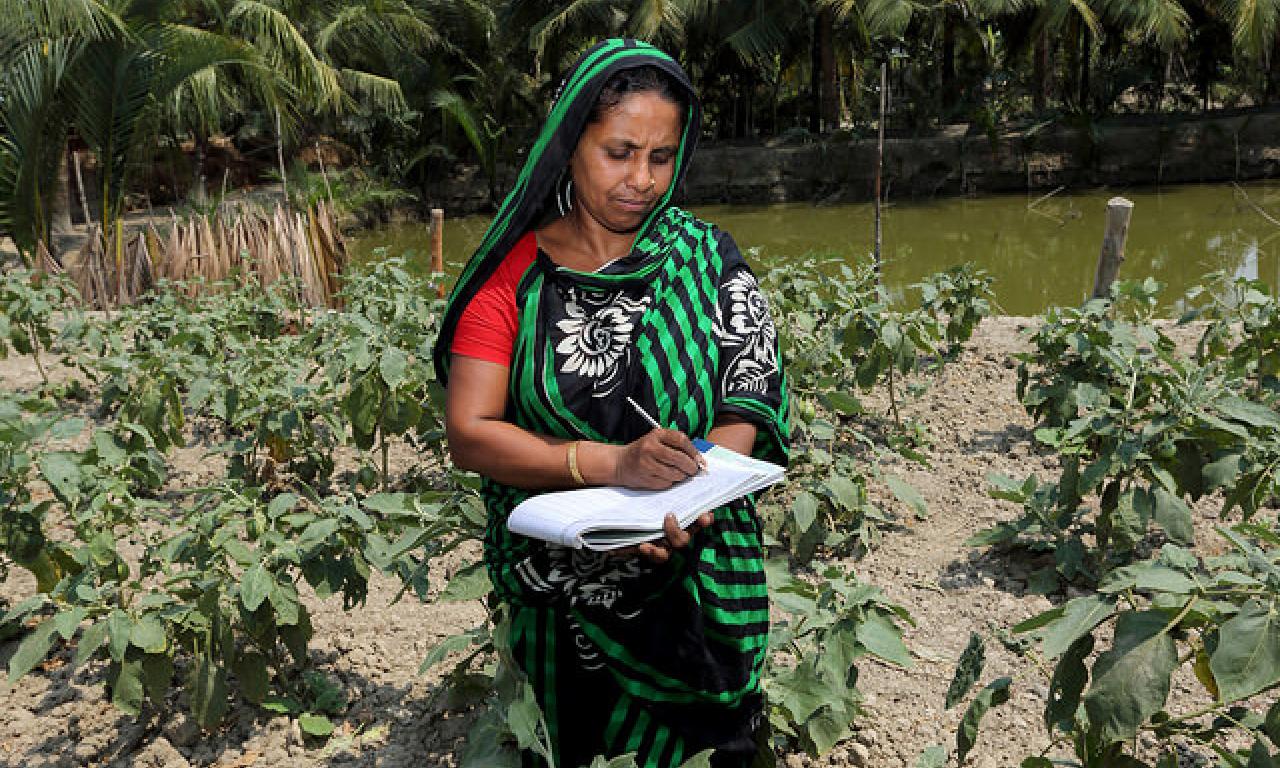
Vicki Wilde, Senior Program Officer at Bill & Melinda Gates Foundation guest blogs about the challenges and inequalities that continue to face women scientists. There is no shortage of literature, both academic and mass media, documenting the importance of women’s advancement in the sciences, including the agricultural sciences. Bringing more women into scientific careers serves to do more than symbolically close a gender gap. It brings a wider variety of experiences and views that can greatly benefit scientific research and development as well as society.
Recommended publications
- Poverty alleviation and women’s empowerment through aquaculture: an experience from Nepal
- Gender and fisheries: do women support, complement or subsidize men's small-scale fishing activities?
Vicki Wilde, Senior Program Officer at Bill & Melinda Gates Foundation guest blogs about the challenges and inequalities that continue to face women scientists.
There is no shortage of literature, both academic and mass media, documenting the importance of women’s advancement in the sciences, including the agricultural sciences. Bringing more women into scientific careers serves to do more than symbolically close a gender gap. It brings a wider variety of experiences and views that can greatly benefit scientific research and development as well as society. Numerous studies show that a workforce primarily of men clearly is not realizing its full potential, and that unequal opportunities are not only a matter of injustice but also a matter of wasted talent.
Balancing the gender equation in science is critical if we are to find answers to the pressing issues that affect global hunger and poverty. On this, I think, we have consensus. What remains is to separate myth from reality, and to move from talk to action.
Way back in 2008, while I was Director of the CGIAR Gender & Diversity Program, we held a Bellagio conference drawing together the world’s top ten programs addressing the issues of women in science. The memory is vivid today, not only for the beautiful setting, but for the myth-busting conversations.
The myth is: Science is merit-based; and therefore women today are as free as men to pursue and advance in the scientific careers of their choice.
The reality is: Although women have better access to education and employment in scientific fields today than ever before, the playing field is not a level one. As women increasingly enter and try to move up in traditionally male-dominated professions, they often face unfriendly structures and dynamics that push them back. Even women who choose to sacrifice their family priorities or risk their prime childbearing years for the sake of their careers may find it difficult to move up the career ladder.
A 1997 study of postdoctoral fellowships awarded by the Medical Research Council of Sweden found that women candidates had to be two and a half times more productive in terms of publications to achieve the same competency rating as men. In Sweden! More recent research shows that women are more likely to have their research published if the peer reviewers are unaware of their gender. Yet more studies document women’s difficulties in accessing funding, information, lab space, promotions and participation in key networks and conferences.
This may sound like old news, but it is real today. My experience with African Women in Agricultural Research and Development (AWARD) taught me that African women in the agricultural sciences often face these barriers, and more. Did you know in some cases supervisors refuse to review women’s papers unless sexual favours are granted? When you meet a woman who never completed her degree, do not assume it was because she couldn’t hack the subject matter.
The challenges are by no means confined to developing countries. It’s tough also in the West’s most prestigious science organizations. One of our Bellagio participants was the famous Dr. Nancy Hopkins, a cancer researcher at MIT. I’ll never forget her story: Dr. Hopkins found that, in spite of putting in 15 hour days in pursuit of her science, which she loved, her work was not easily noted or respected by her colleagues. Also, when she asked for resources she’d receive only silence as a response. By contrast, her male colleagues were rewarded. She decided to document the differences, literally crawling around the labs at night taking measurements of space and resources, comparing those allocated to women and men. The rest, as they say, is history.
Dr. Hopkins’ report to senior management prompted the President to form a new MIT committee tasked with advancing women in science. The committees the President established still exist and have been very effective in ensuring equity for women faculty, not only in terms of salary, but also in regard to resources, space and fair treatment by colleagues.
What can global science organizations do differently? Our Bellagio participants recommended the following:
- Recognize that women are not on the same playing field as men and do something about it.
- Identify and empower groups of women and men champions and build a critical mass of pathfinders, visionary leaders, change agents and risk takers.
- Collect, monitor and use data on women’s participation in science and conduct more research on gender issues.
- Practice mentoring and build capacity for scientific and leadership skills.
- Build networks, partnerships and alliances, practice cultural intelligence and adaptability.
- Put in place policies, mandates, incentives and performance indicators, monitor and evaluate to ensure accountability, and establish long-term interventions and strategies.
- Increase visibility, improve communications and remember to celebrate the success stories.
- Commit the necessary resources.
The CGIAR is in a great position to leverage its agricultural research to increase the number of women scientists on its teams and to create more impact for women farmers on the ground. As the CGIAR puts into place a new system of incentives and accountability mechanisms for recruitment, retention and advancement of women in the agricultural sciences, we’ll see that more successful women means more successful science.